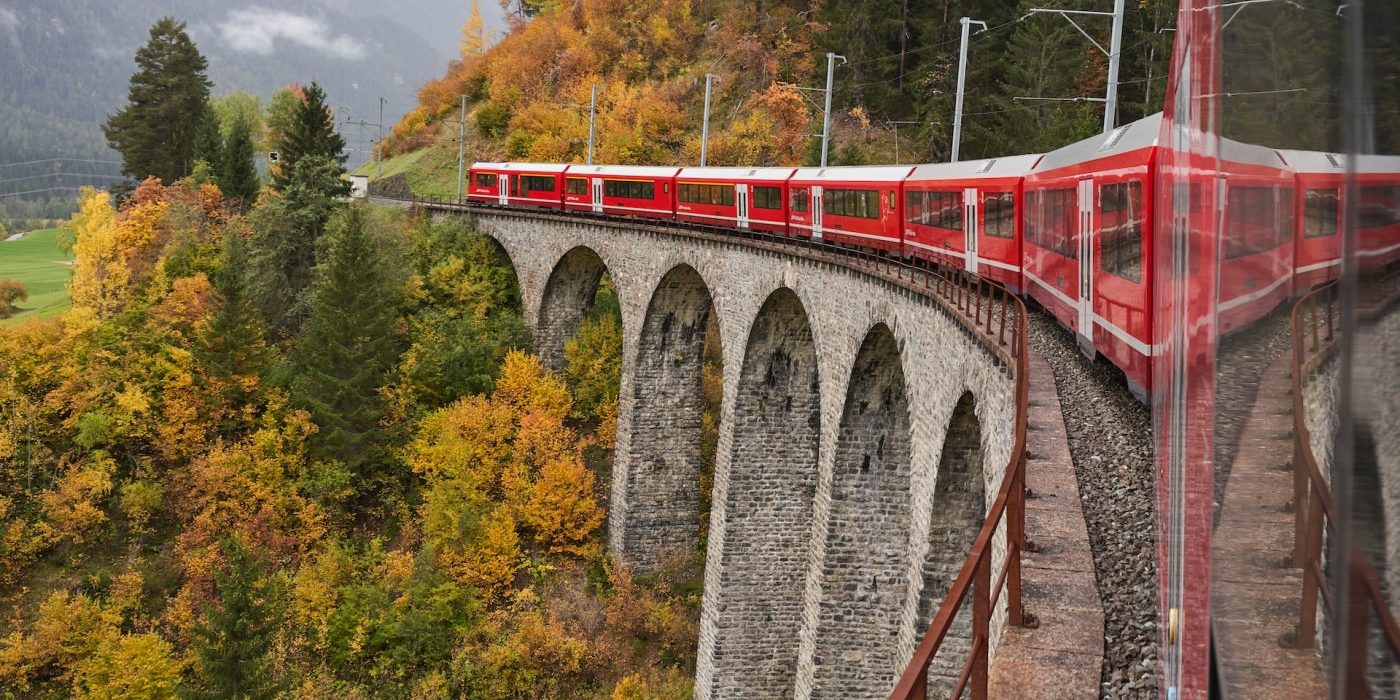The Swiss jumping train: a leap ahead?
For a long time, Swiss trains have been considered the gold standard of rail by train enthusiasts and travellers – they boast scenic routes and incredible engineering, as well as clockwork punctuality that makes train travel essential in Switzerland. Swiss trains can navigate narrow tracks and scale the Alps, and that’s down to the hard work and vision of their railway engineers. On 11 December 2022, a railway innovation 150 years in the making took place – the new GoldenPass Express (GPX) journeyed from Montreux to Interlaken via Gstaad without requiring a change of trains, the first time in history that such a trip was possible.
The route was noteworthy, but the innovation has also come courtesy of some revolutionary technology. The train, which is operated by the Montreux-Oberland-Bernois Railway (MOB), is able to ‘jump’, changing both height and width in the process; it can also change the electrical voltage of the vehicle.
These advances were necessary to overcome the issues in connecting the towns, something that has challenged Swiss engineers since 1873. Passengers had to disembark and change trains because there are two different types of tracks – metric gauge and standard gauge – to navigate, and that’s before you factor in the change in heights and track voltage too. The GoldenPass Association was founded in 1924 to figure out how to solve the problem, with a previous solution (proposed in 1930) to install a third rail due to these issues. Essentially, you needed two entirely different types of trains to make the journey before the GPX came into operation.
Previously, passengers would have had to change trains […] – rather than change the track, why not change the train coaches?
The train uses a variable gauge bogie, first developed in 2007, which jumps into action when the train reaches Zweisimmen Station – the point where, previously, passengers would have had to change trains. This idea came in response to an idea by the Association in 2006 – rather than change the track, why not change the train coaches? The GPX passes over the gauge-adapting ramp, and flaps are raised to allow the coach to position itself (this might not be a new idea, but it certainly is an innovative one). During this transition, the coaches go about 15 kilometres per hour, and they adjust their height from 350mm to 550mm to account for the difference in platform heights. This adjustment takes about eight minutes in total.
The GPX takes about three hours 15 minutes to make a journey. It’s currently only running once a day in each direction, but the plan is to expand it to four round-trip journeys a day starting 11 June 2023. Passengers have the choice of three different classes aboard the scenic ride: second class, first class, and prestige class, where comfortable heated seats allow passengers to face the direction of travel and are raised 40cm for a sprawling view of the panoramic views. A selection of drinks and snacks are available for purchase on board, as well as the option to book meals in advance — with the choice of a breakfast box, apero-plate package, or a caviar package.
The GoldenPass Express will become an attraction in its own right
In a statement, MOB, the company behind the new trains, predicted: “The GoldenPass Express will become an attraction in its own right. During the three hours of travel, the passenger will discover some of the most beautiful landscapes in Switzerland, while enjoying a high level of comfort and gastronomy. The GoldenPass Express is destined to become one of the legendary trains in Switzerland, such as the Glacier Express or the Bernina Express [the highest line across the Alps].”
There’s certainly a marketing imperative for MOB – the GPX concept has for a long time been hyped by the company as a future innovation on its lines, especially as trials began in 2019. It will help better connect the three hotspots of Montreux, Interlaken and Lucerne, and hopefully encourage more tourism in the area by making travel more seamless. It has never captured the imagination of tourists in the same way as the legendary Glacier Express, but it’s possible that may change when the train gets fully operational. Whether the train becomes part of the popular conversation in Switzerland, it’s further proof of the nation’s propensity for rail innovation.

Comments